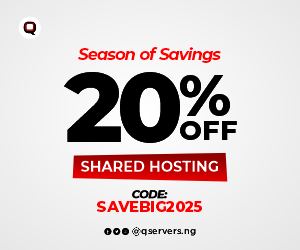Email marketing is like planting a seed in the digital world—nurture it
right, and it can grow into a flourishing tree of connections, opportunities, and sales.
But like any seed, it needs the right care, attention, and strategy to truly thrive.
For beginners, the journey can seem very challenging.
You might be asking yourself, “Where do I start?” or “How do I make sure my emails don’t get lost in the noise?”
But don’t worry; you’re not alone.
Everyone starts somewhere, and today, we’re going to walk through the essential email marketing tips that every beginner must know.
Table of Contents
ToggleWhy It’s Important To Understand Your Audience

Before you hit that “Send” button, the most crucial step is
understanding who you’re talking to.
Your audience is not just a faceless group of email addresses;
they’re people with unique needs, desires, and pain points.
Importance of Knowing Your Target Audience:
Imagine trying to have a conversation with someone without knowing anything about them.
It would be awkward, right? The same applies to email marketing.
To connect with your audience on a deeper level, you need to know who they are.
What keeps them up at night? What are their goals? By understanding your audience,
you can tailor your messages to speak directly to them, making your emails more engaging and effective.
Creating Buyer Personas:
A great way to get to know your audience is by creating buyer personas.
These are fictional characters that represent your ideal customers.
Give them names, jobs, challenges, and even hobbies.
By doing this, you’re not just writing emails;
you’re crafting personalized messages that resonate with real people.
Building A Quality Email List
Your email list is the backbone of your email marketing efforts.
But building a list isn’t just about quantity; it’s about quality.
Opt-in Strategies for Building Your List:
Start by offering something valuable in exchange for an email
address—this could be a free eBook, a discount, or exclusive content.
The key here is to make sure your audience finds it irresistible.
This is where the magic of permission-based marketing comes into play.
When people opt in to your list, they’re saying, “Yes, I want to hear from you.”
And that’s a powerful thing.
The Power of Permission-Based Marketing:
Permission-based marketing isn’t just a buzzword; it’s a philosophy.
When you have permission, your emails are welcomed rather than ignored.
Must Read: How To Do Email Marketing Like A Pro
This is the foundation of building a relationship with your subscribers
—one that’s based on trust and mutual respect.
Crafting The Perfect Subject Line
The subject line is the gateway to your email.
It’s the first thing your audience sees, and in many cases,
it determines whether your email gets opened or sent to the trash.
Why Subject Lines Matter:
Think of your subject line as the headline of a newspaper article.
If it’s not intriguing, no one will bother reading the story.
A great subject line captures attention, sparks curiosity, and compels the reader to open the email.
Tips for Writing Engaging Subject Lines:
Keep it short, sweet, and to the point.
Use action verbs to create a sense of urgency or excitement.
Personalization can also make a big difference—using the recipient’s
name or referencing their past behavior can make your subject line stand out.
Personalizing Your Emails
In a world where people are bombarded with generic content, personalization is your secret weapon.
The Impact of Personalization in Email Marketing:
When you personalize your emails, you’re saying, “I see you, and I understand you.”
This can make your audience feel valued and connected to your brand.
Personalized emails are more likely to be opened, read, and acted upon, leading to better results for your campaigns.
Must Read: Proven Strategies To Build Your Email List
Techniques for Personalizing Your Campaigns:
Beyond just using the recipient’s name, you can personalize your emails by segmenting your list,
tailoring content based on past interactions, and even sending
emails on special occasions like birthdays or anniversaries.
Writing Compelling Email Content
The content of your email is where you get to share your message, offer value, and inspire action.
How to Create Content That Resonates:
Your email content should speak directly to your audience’s needs and interests.
Use a conversational tone, tell stories, and make your readers feel something.
Remember, people are more likely to remember how you made them feel than what you actually said.
Structuring Your Emails for Maximum Impact:
Start with a hook that grabs attention.
Follow with valuable content that addresses the reader’s needs or problems.
Finally, end with a clear call-to-action (CTA)
that tells the reader exactly what you want them to do next.
Utilizing Email Templates
Email templates are like the foundation of a house—they provide structure,
but you can still add your own personal touch.
Benefits of Using Email Templates:
Templates save you time and ensure consistency across your campaigns.
They also allow you to focus more on crafting your message rather than worrying about design and layout.
Customizing Templates to Suit Your Brand:
While templates are helpful, don’t forget to make them your own.
Customize colors, fonts, and images to reflect your brand’s personality.
This will make your emails feel more cohesive and professional.
The Power Of A/B Testing
A/B testing is your tool for optimizing and improving your email campaigns.
What is A/B Testing?
A/B testing involves sending two versions of an email to a small
segment of your audience to see which one performs better.
This could be a different subject line, email content, or CTA.
How to Conduct A/B Tests for Your Emails:
Start by testing one element at a time, such as the subject line or CTA.
Analyze the results and use the winning version for the rest of your campaign.
Over time, these small optimizations can lead to significant improvements in your email performance.
Timing Your Emails
Timing can be everything when it comes to email marketing.
Best Practices for Email Timing:
The timing of your emails can significantly impact open rates.
Generally, sending emails during the middle of the week and mid-morning works well,
but this can vary depending on your audience.
Understanding the Perfect Send Times:
Use analytics to understand when your audience is most active.
Are they more likely to open emails in the morning or evening?
By aligning your send times with your audience’s behavior,
you can increase the likelihood that your emails will be seen and acted upon.
Analyzing Email Metrics
Data is your best friend when it comes to improving your email marketing efforts.
Key Metrics to Track:
Keep an eye on metrics like open rates, click-through rates, and conversion rates.
These numbers can tell you what’s working and what’s not.
How to Use Data to Improve Your Campaigns:
Use the insights from your metrics to make informed decisions.
If a particular email had a high open rate but low clicks,
maybe the content didn’t resonate, or the CTA wasn’t clear.
Constantly refine and adjust your strategy based on what the data tells you.
Segmentation Strategies
Segmentation is the art of dividing your email list into smaller, more targeted groups.
Why Segmentation is Essential:
Not all subscribers are the same, so why treat them like they are?
Segmentation allows you to send more relevant content to different groups within your list,
leading to higher engagement and conversions.
Tips for Effective Segmentation:
Segment your list based on factors like demographics, past behavior, or purchase history.
The more specific you can be, the better your results will be.
Ensuring Deliverability
Even the best email won’t work if it doesn’t reach the inbox.
How to Avoid the Spam Folder:
Avoiding the spam folder starts with building a clean email list and
using a reputable email service provider.
Be mindful of your email content—avoid spammy language, excessive links, and large images.
Tips for Improving Email Deliverability:
Keep your list clean by regularly removing inactive subscribers.
Use double opt-in to ensure that your subscribers really want to hear from you.
And always provide an easy way for people to unsubscribe if they’re no longer interested.
Compliance with Email Marketing Laws
It’s essential to stay on the right side of the law when sending emails.
Understanding GDPR and CAN-SPAM:
Familiarize yourself with regulations like GDPR in Europe and CAN-SPAM in the US.
These laws are designed to protect consumers from unwanted emails
and ensure that marketers are transparent about their practices.
How to Stay Compliant:
Always get explicit permission before adding someone to your list,
provide a clear way to unsubscribe, and include your physical mailing address in your emails.
These small steps can help you avoid hefty fines and maintain a positive reputation.
Must Read: What Is The Best Niche For Affiliate Marketing
Building Long-Term Relationships with Your Audience
Email marketing is more than just a way to drive sales;
it’s about building lasting relationships.
Strategies for Nurturing Subscribers:
Think of your subscribers as more than just numbers on a list.
Nurture these relationships by consistently providing value, being authentic,
and showing that you genuinely care about their needs.
The Role of Consistency in Email Marketing:
Consistency is key in maintaining your audience’s trust.
Whether it’s sending a monthly newsletter or weekly updates,
stick to a schedule that your subscribers can rely on.
Conclusion:
Email marketing is a journey—one filled with learning, experimentation, and growth.
As a beginner, it’s easy to feel overwhelmed,
but remember that every expert was once where you are now.
By understanding your audience, crafting personalized content,
and constantly refining your approach,
you can create email campaigns that not only reach inboxes but also touch hearts.
So,
take these tips, apply them, and watch your email marketing efforts flourish.
Over To You Now:
Do you think email marketing is still profitable has days gone by?
And what do you think a beginner should do that scale their business
going through email marketing method?
Ensure you share what you think about this.
And most importantly, don’t forget to share this article on social media sites if you gain value here.
Sharing is caring.
FAQs
- What is the best way to build an email list?
The best way to build an email list is by offering something of value in exchange for an email address, such as a free eBook, discount, or exclusive content. Make sure your offer is compelling and relevant to your target audience. - How often should I send emails to my subscribers?
It depends on your audience and your content. Some businesses find success with weekly emails, while others opt for monthly newsletters. The key is to find a frequency that keeps your audience engaged without overwhelming them. - What are some common mistakes to avoid in email marketing?
Common mistakes include sending too many emails, not segmenting your list, neglecting to personalize your content, and failing to track and analyze your email metrics. - How can I increase my email open rates?
To increase open rates, focus on crafting compelling subject lines, personalizing your emails, and sending them at optimal times. A/B testing can also help you identify what works best for your audience. - Is it necessary to invest in an email marketing tool?
Yes, an email marketing tool can make managing your campaigns easier, provide valuable insights, and ensure your emails are delivered successfully. Tools like Mailchimp, ConvertKit, GetResponse and others offer features that can significantly enhance your email marketing efforts.











